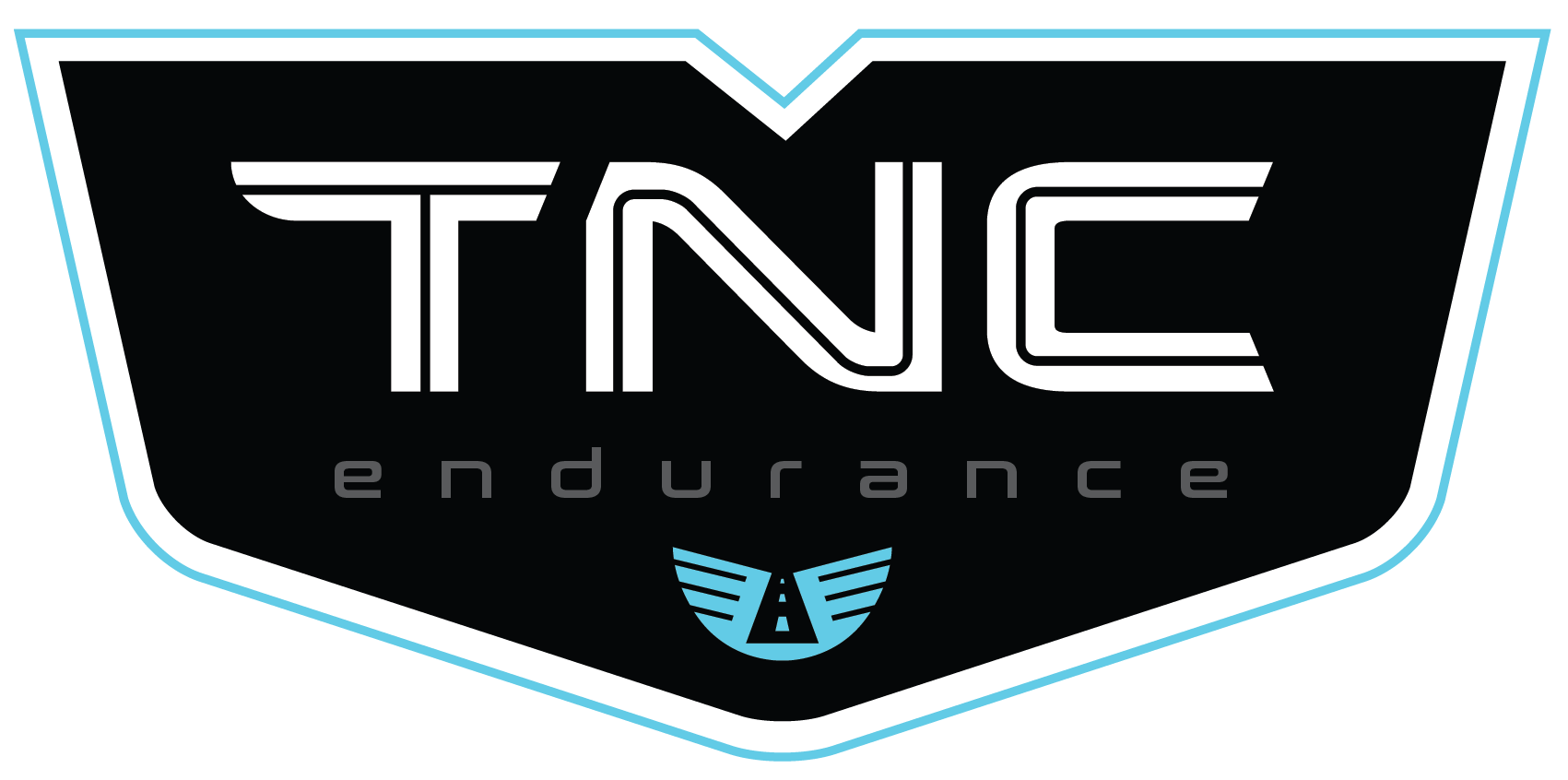My Nutrition Journey
“As long as the
furnace is hot enough… it’ll burn anything!”
~Men’s College XC Team’s Motto (for nutrition)
running and racing journey. I am not a nutritionist, but I have come a long way, and have had the chance to work with from some fantastic nutrition experts. I share what I’ve learned in hopes that it might help
your journey.
I often wondered why I didn’t look quite like
the women I was racing with—they were so strong and lean! They were also
able to train at higher volumes; I was often injured and felt run down when I
increased my mileage. I wondered if it had to do with diet, but often
dismissed the idea since I knew I was eating the right number of calories per
day. That’s all that matters, right? If the furnace is hot enough,
it’ll burn anything? Plus, if you’re targeting 2,000 calories per day,
what difference could it make if those were coming from light yogurt, chicken
nuggets and fries, and frozen pizza versus oatmeal, greek yogurt, and vegetable
stir fry?
5 Oreos, coffee/hot chocolate mix, light yogurt
Frozen meal, applesauce, cookie
Pretzels, Coffee/hot chocolate mix
2 slices pizza, Pop Tart (because I counted up my calories for the day and
realized I had some “extra” to spend :))
have been just right for my base metabolism (BMR) plus my weekly mileage. As long as I was eating the right #, it
shouldn’t matter where it comes from, right? As long as the furnace is hot
enough?
Could a diet change, switching to primarily
fresh and organic foods, help my performance?
I read a lot about elite athletes and how they
ate. They snacked on Greek yogurt and
granola and ate salmon on brown rice with steamed vegetables for dinner. Really?
I’d much rather have my microwaveable burritos, frozen pizza, or pre-packaged
lasagna. All are so much easier than
cooking! Plus, I was raised on packaged things, so that’s what I craved and
knew how to “cook”. Not to mention, packaged items are usually on sale and you
can double a coupon to purchase them for next to nothing – great for my budget-conscious
and coupon-game wired brain :).
I embarked on an experiment to see if switching
to a whole foods/organic based diet would help. It was a very difficult
transition for me to make. I didn’t know what over half of the vegetables were
when I first entered the local food co-op! And even if I did know their
names, how do you cook or what do you make with them?
The first four weeks of transition were
tough. I craved sugar more than anything imaginable. I stared
into our pantry cupboard, channeling my inner powers to make packaged snacks to
appear. It didn’t work. I specifically didn’t buy processed or packaged
foods, as I knew if I had them in the house that I would find them and devour
them.
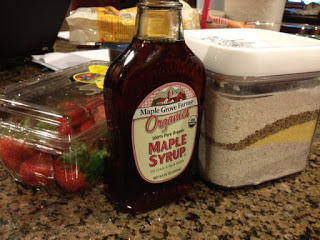 |
| 8 Grain Pancakes from scratch. Better than anything you’ll find in a box! Recipe here. |
My stomach had a hard time processing the
organic and more plant-based diet at first. I needed to plan my runs
around where I knew bathroom stops were located. My stomach often
gurgled. The one positive thing I noted during this time was how much
more I was able to eat. I was able to add AM and PM snacks into my day
and meals were much larger (in relation to the pizza and pop-tart dinner!).
I stuck with it through these first four weeks
because I really wanted to see if it made a difference. It would have been so
easy just to give up. If this sounds like you, expect the transition to be
difficult. Have a plan on how you’ll stick with it!
So – was it worth it? Absolutely. Hands down. I
recover from workouts much quicker, which allowed me to train more each
week. My previous mileage before the nutrition switch was a high of 90
miles/week, which left me feeling tired and spent. I was now able to
train at 100 miles/week in back-to-back weeks without the same feeling. Amazing!
Doubles also became easier. My body composition has also changed—it
hasn’t been a drastic overnight change, but slow and steady without really
trying. I rarely get sick now. I used to bruise easily and carry it for
two weeks. Now I heal normally – perhaps even more quickly than normal?
It is awesome what real food can do for you.
Good thing Nate was there to help!
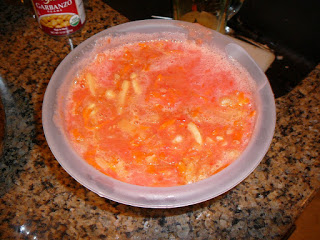 |
| My first homemade soup. Take a second look. Yes, I actually did follow a recipe and yes, I actually was TRYING. |
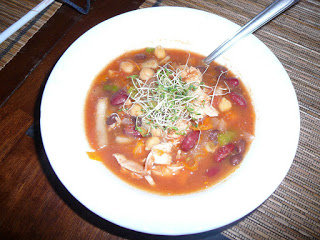 |
| Nate whisked it away and actually made something edible with it. 🙂 |
oven and grill them to top salads. (Yum! Recipe here) I learned that salads and fresh meat
in the evenings could be delightful, as well as quinoa, steamed vegetables, and
marinated tofu. I have never eaten this way in my entire life, and I never thought
I would. But knowing what I do know, I would
not go back to my packaged ways! As much as I craved and missed the salt, fat,
and sugar in those packaged foods, I can happily say that I have completely
changed my taste buds to crave whole grains, home-made dishes, and simple,
organic foods. There is nothing like an organic nectarine. Don’t believe me? Try it!
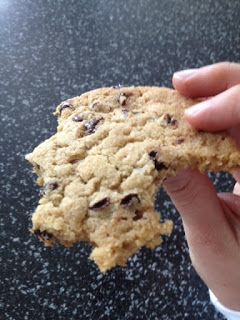 |
| I still am a huge fan of chocolate chip cookies, though! Everything in moderation 🙂 |
Phase II – The 10 Minute Rule
I’ve also worked on nutrient timing. The first
and foremost rule I adhere to is eating within 10 minutes of a workout. Some research says you have a 30 minute window. Whatever the true “window” is, the earlier you can get it in, the better.
The
ratio I follow: 0.5 grams carbs/pound of body weight with protein at a
ratio of 3:1 to 5:1 carbs/protein. This should be consumed as close to every
workout as possible.
Some of my favorites: bagel with PB & Jam,
Oatmeal w/ side of Greek yogurt, Protein shake and a slice of home-made bread,
cereal with milk, egg white tortilla w/ spinach, Nutella on an English muffin
w/ 2 scrambled eggs, the list goes on!
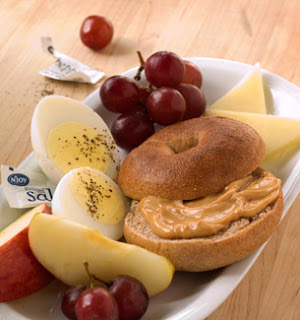 |
I’ve experimented with this routine ½ of the
time vs. after every one of my workouts (including my short doubles) vs. very
sporadic timing. I will say that the only way I’ve seen the full benefits is
when I’ve consumed this amount after every workout. It doesn’t matter if it’s a
4-5 mile PM shake-out jog, this is something I adhere to religiously. Adding
this into my workout routine helped me to increase mileage even further. There
is a big difference in recovery time when this is done!
groups: proteins, carbohydrates, and fats. I was given target ratios (varying by my mileage) and learned how important it was to try to hit these. I try
(emphasis on try!) to have each of my meals and snacks hit these targets.
to many of my meals. For breakfast before I’d typically have a bagel with jam.
Now I have that same bagel and add a side of 6-8 ounces of plain Greek yogurt. If my goal
is to have 80-100g of protein each day, there’s no way I’ll get there if I don’t
have at least ~15g/meal or snack.
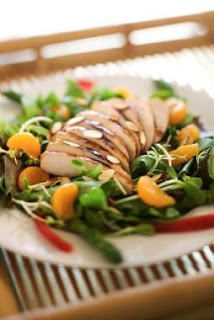 |
| Salads are such an awesome meal option! They’re easy and the options are endless. What do you have in your fridge that needs to be used up? Grill or steam it and throw it on! |
UCAN
found myself stubbornly hanging on to an extra 4-6 pounds. I had to work
really, really hard to lose anything. Seems odd, right? I’m training 100
miles/week, being diligent about my intake, and still not able to lose a pound?
nutrition puzzle for me.
I was predominately a carb burner. Typically someone burns fat at slower
paces and switches to a higher percentage of carbohydrate metabolism as their
pace increases. I found that I was
burning almost entirely carbohydrates ALL of the time, even on long, slow
endurance runs.
history in the family, also a lot of very heavy relatives – and not just 50 lbs
overweight, more like 200 lbs overweight) and also having eaten a large amount carbs
for so long (including fueling all workouts with carbohydrates, before and
during). I love breads, cereals, granola, oatmeal, pasta, and all carbs in
general!
implemented fasted runs. I’d go out for my morning easy-mileage run without
anything in me, which would force my body to convert to burning fat. Some of
these runs were painful. I could tell my body had no idea how to use anything
but readily-available carbohydrates. I could also tell it took longer to
recover from these runs vs. those where I was fueled. Not ideal.
you’re burning fat or carbohydrates?
in training. Think about it. If you are always burning the carbs you just ate
or stored glycogen, then you’re never going to tap into your fat stores! Not
burning fat = not losing weight.
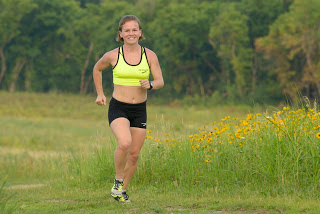 |
| Pre-UCAN, July 2013 |
to be able to burn both types of fuel. There is only so much glycogen you can
store and only so much carbohydrate you can take in during a race.
top-level runners, I landed on UCAN. It’s made of a different starch (Super
Starch) that burns slowly enough that it doesn’t trigger the release of
insulin. Insulin is the hormone that tells the body to burn carbohydrates
first, essentially “shutting off”
the fat-burning process until blood sugar has been lowered. Insulin also
triggers the storage of glucose, including storage in your fat cells.
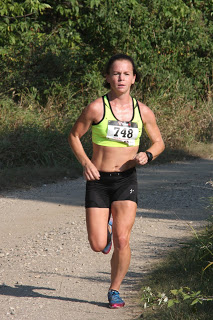 |
| Post-UCAN (6 weeks). Need I say more? Seriously, I have never, ever been able to get to race weight early in a training cycle. |
insulin isn’t triggered, you’re able to burn both the carbohydrate in the
product and also able to burn your body’s fat stores. BINGO! Plus, it’s just a
steady release of energy so you don’t have to take in nearly as many calories
during training or competition. I’ve also found it has helped take away my
dizziness and lightheadedness during hard workouts and marathon races. Amazing,
really.
carb-burner? Some simple clues: very difficult to lose weight despite high
training volumes, dizziness or lightheadedness at the end of a workout or
marathon, and legs come “undone” at the end of a fasted run. If yes, you may want to experiment with either
the “natural” ways to turn yourself into a fat burner (fasted runs, carb
cycling) or give UCAN a try. Let me know if you have questions on the product,
I’m happy to help.
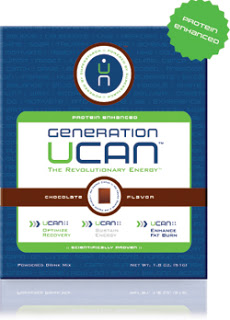 |
| UCAN Chocolate. Huge fan. |
journey:
(cookies, dinners, microwavable meals), just DON’T buy them. If they aren’t in
your house, you can’t eat them. Simple.
2-3 snacks. Snacks should be about ½ the caloric intake as meals, so you can do
the math in regards to your targets per meal/snack.
same nutrient ratio. For example, when my mileage is high, I need to target a
larger % of protein. Therefore, for every
meal or snack I try to take in at least 15-20 grams of protein. Unless you’re
thinking about this, it’s hard to reach (unless you naturally eat a lot of
protein!)
of your caloric intake in the form of fat. The more fat you can swap with healthy fat
options, the better – think avocados, nuts, and olive oils. See if you can cut
out some of the saturated fat you may be consuming.
way to both save money and also better track what you’re eating. Many meals eaten out of the home contain an
enormous amount of sodium, fat and calories. Cooking in, although more time-consuming,
can be just as fun for you (and a family),
and much more nutritious! Think about making it a Friday night
tradition!
Myfitnesspal.com (my preferred tracking tool) will track carbohydrates from a
donut, an apple, and whole wheat pasta the same. They are not the same. Simple
sugars vs. fructose vs. complex carbohydrates are all metabolized
differently. The greater concentration of
whole grain carbohydrates you can incorporate into your diet, the better.
weight and competing in events over 2 hours. UCAN has helped me tremendously
with this.
experimenting with foods, learning what and how to cook, learning about healthy
snack ideas, and more. I will post healthy recipes here periodically – if
I take the time to post them, give them a try! It likely means they’re not only
easy to make, but also great for you and great tasting. Bear with me if you
can, I am not the greatest chef around :).
It will be an adventure, no doubt!
